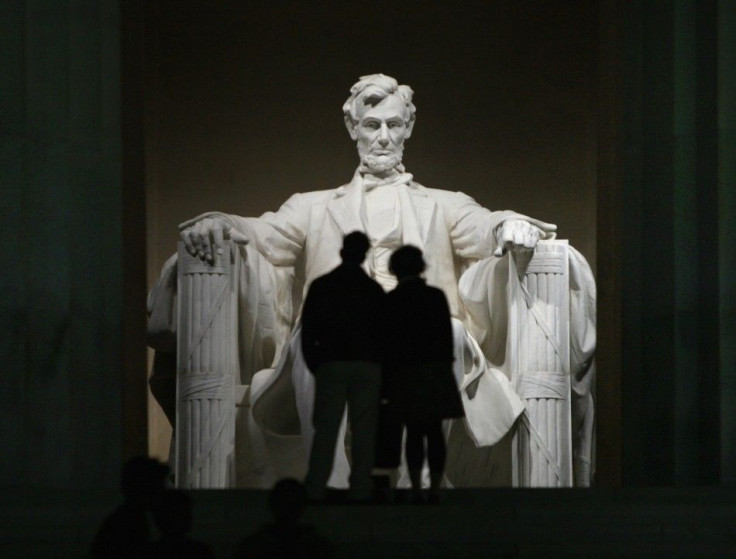Five Economic Problems The Budget and Debt Deals Don't Solve

The temporary respite from political and policy deadlock in Washington, D.C., achieved late Wednesday night is certainly a newsworthy step forward, but it utterly fails to address larger economic problems facing the United States.
Here are five hurdles still facing the U.S.:
Long-Term Debt: $16.7 trillion
U.S. long-term debt stood at $16.7 trillion, according to the latest measure from the U.S. Treasury. That includes $11.9 trillion in debt held by the public, which cost $19.8 billion in interest expense in September 2013 alone.
The deal on Wednesday raised the debt limit once again, allowing politicians to re-enact that battle come February 2014. The debt limit has been raised 45 times over the past six presidential administrations, according to the Wall Street Journal.
The U.S. government’s debt amounts to 73 percent of gross domestic product, said the Congressional Budget Office in mid-September. That’s the highest ratio since World War II. For context, Japan’s national debt is over a quadrillion yen, or a staggering 240 percent of GDP. In absolute value, Japan’s debt is about $10.46 trillion. The 27 European Union countries held collective debt equivalent to 85 percent of collective GDP in 2012, according to Eurostat, led by Greece with 157 percent GDP-debt.
Unemployment: 7.3 Percent
The latest Bureau of Labor Statistics data pegged the U.S. unemployment rate at 7.3 percent in August 2013. The bureau missed a release of its monthly unemployment indicator on Oct. 4, viewed as crucial economic information by markets, because of the government shutdown. August's number is down from 8.1 percent unemployment in August 2012, but only marginally down from June 2013 levels, which were at 7.6 percent. In recent months, the unemployment rate has mostly stood static or creept down slowly. The Federal Reserve has said that its planned slowing of $85 billion in regular bond purchases is tied closely to a fall in unemployment, with economists believing that 6.5 to 7 percent unemployment could be a key threshold.
Labor Participation: Significant Numbers Have Left Labor Force Entirely
The benchmark BLS unemployment figure doesn’t include the number of workers who have stopped searching for work, which stands at worrying highs in 2013. About 14.3 percent of the working-age U.S. population are not fully tapped into the labor market, according to the BLS’ U-6 measure. The complex measure includes the unemployed, those who have stopped seeking work, and part-time workers seeking full-time jobs.
The U.S. labor force has grown by only 1.9 million since December 2007, according to July 2013 figures. Barclays PLC (LON:BARC) analysts wrote last week that Fed minutes indicate that there is “cyclically depressed labor force participation,” which could be behind any apparent declines in unemployment. The Organization for Economic Co-operation and Development also said in a Wednesday report that the rate of people jobless for a year or more in rich countries has reached its highest level since the financial crisis, the Wall Street Journal reported recently.
US Credibility: Hurt And Still Sliding
The credibility of the U.S. government, especially as a responsible body paying back loans and interest on bonds on time, has suffered from the two-week crisis, which IHS economists estimate cost $3.1 billion. Foreign media also have criticized the U.S. shutdown debacle and the hasty, temporary resolution of the debt ceiling debate.
Although financial markets have been more relaxed about politicians reaching a deal in time, economists warn that future complacency may not be guaranteed. Fitch Ratings put the U.S. credit rating on watch for a potential negative downgrade on Tuesday, warning that coming too close to deadlines is enough to unnerve credit markets.
“The U.S.’s prestige in global financial markets and world capitals will continue to deteriorate if we lurch from crisis to crisis,” wrote IHS Global Insight chief economist Doug Handler on Wednesday.
Budget Sequester: Ongoing Cuts Unless There’s A New Deal
A fresh round of budget cuts, known as sequester cuts, will come into effect next year, unless Democrats and Republicans reach a further budget deal. A conference committee reconciling House and Senate budget bills will start its work shortly, and must come up with a deal by December. That deal may or may not include a renegotiation of the sequester, which saw $85 billion in 2013 automatic spending cuts spread evenly across defense and non-defense spending. Those cuts could come to $90 billion in fiscal 2014, according to an August CBO report.
Economists have warned that the sequester, especially its automatic and indiscriminate nature, could hurt the broader economy, though the effects so far have been milder than feared. The next round of cuts could take effect in January, and it's anyone's guess whether budget lawmakers will reach a deal. The sequester will also be central to the larger debate around government shutdowns and debt limits, expected to reappear in January.
© Copyright IBTimes 2024. All rights reserved.





















